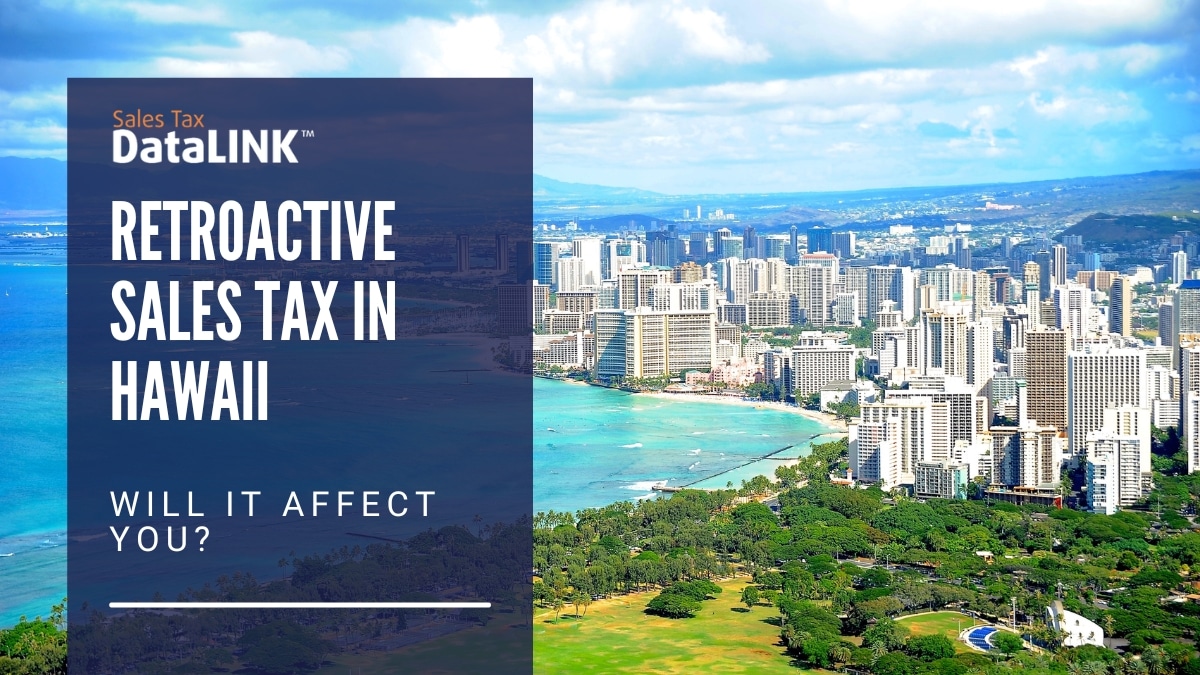Navigating Retroactive Sales Tax: Hawaii’s GET Nexus Provisions
Hawaii’s new ‘general excise tax’ (GET) economic nexus provisions were announced as applying from December 31, 2017. Since the announcement came in June, after the Wayfair decision that struck down Quill.
This Supreme Court decision did away with the requirement that a company must have a physical presence in a state before it can be required to collect and remit sales tax for online sales. It opened a path to completely new definitions of nexus, including click nexus, economic nexus, and the potential for plenty more creative ideas.
Under Hawaii’s new GET law, a company has nexus under either of the following circumstances:
- They have a physical presence in the state of Hawaii.
- They received $100,000 or more in gross income from goods delivered in the state, services used in the state, or intangible property used in the state.
Retroactive taxes?
As written, the law seems to require companies to remit GET tax from about 18 months before the overturn of Quill. This could mean coming up with thousands of dollars that were never collected from consumers.
So Hawaii announced a couple of weeks later that it will not insist on collecting GET tax until after July 1, 2018. After that date, companies expecting to pay $4,000 or more in a year — basically, anyone with economic nexus — must file monthly.
This means that companies that established economic nexus in 2017 by having gross sales of $100,000 or more in Hawaii should have filed their first GET tax return on August 20th. The second will be due tomorrow, September 20. There is a grace period for the first deadline, so tomorrow is not too late.
Let’s imagine a small manufacturing business in Florida that produces macadamia nut candies. They sold $100,402 of these goods in Hawaii in 2017 as direct sales from their website. They’re expecting to sell about $60,000 between July and December 2018. They thought they’d need to collect sales tax in 2019, the first time after the Wayfair decision when they expect to reach the sales threshold for economic nexus.
In fact, Hawaii expects them to start collecting sales tax on July 1, 2018, and to start filing on August 20, 2018. With the grace period, they can file their first return on September 20.
Catch up income
Let’s change the story a little. Imagine that last year’s $100,402 in revenue included wholesale sales to hotel gift shops as well as direct sales. The company may think that it will only be responsible for direct sales, and will therefore not have nexus in Hawaii.
Not so fast! As the Hawaiian government explains, “GET is a tax on the business for the privilege of doing business in Hawaii, whereas a sales tax is a tax on the customer that is collected by the business.” In other words, GET taxes are applied to wholesale as well as retail sales.
If our imaginary candy company hits $100,000 in Hawaiian sales in November, they will begin collecting the GET tax from their customers. But they will be responsible for paying the GET tax on all their sales from July 1 on. The GET tax applicable from July through November is known as “catch-up” income.
The GET tax from this “catch-up” income can be spread out over a few months. But it doesn’t go away. The fact that the owners, living in Florida where they have never heard of GET tax, didn’t realize they were liable will have no effect on the amount they owe.
Percentages for wholesale and retail are different in Hawaii. You can pass on the GET tax just as you would sales tax, with similar regulations as in other states, but you are not required to. “If a business chooses not to pass on the GET,” Hawaii’s government warns businesses, “it cannot say that there is ‘no tax.’”
Don’t wait for sales tax changes to GET you
Hawaii has a little extra local color in its tax laws, but every state will make its own decisions. If you sell goods in more than one state, you need to become familiar with the rules in any state where you might establish nexus this year… and any state where you might have established nexus last year, too.
In fact, you had better get ready for any state where you might establish nexus next year, too. You never know.
Whatever regulations you are already familiar with may seem like the common sense, ordinary way to do things. In fact, you probably can’t guess what any state is likely to do. For most companies, it makes sense to get on top of sales and use tax (and GET tax, too) for all the states.
SalesTaxDataLINK makes this a realistic goal. Try it for free.




